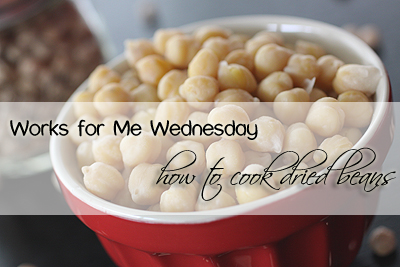 My husband and I don’t eat a lot of meat… We’re not vegetarians, but we do try to limit our meat intake and we eat quite a few meatless meals each week (not just on Mondays!). So, to make sure that we get plenty of healthy protein and have filling meatless meals, I tend to cook with beans quite a bit.
My husband and I don’t eat a lot of meat… We’re not vegetarians, but we do try to limit our meat intake and we eat quite a few meatless meals each week (not just on Mondays!). So, to make sure that we get plenty of healthy protein and have filling meatless meals, I tend to cook with beans quite a bit.
Not only are beans healthy and great for meatless meals, they are also very budget friendly, especially if you cook dried beans instead of canned beans!
Let’s do a quick price comparison, shall we?
At a local grocery store, a 15-ounce can of black beans (which happen to be one of my favorites and readily available in both dried and canned varieties) typically costs around $1.00. For organic black beans with a BPA-free lining, however, the price quickly jumps up to about $2.20. Since I prefer to have my beans sans BPA, I usually would opt for the pricier variety.
Now, let’s factor dried beans into the equation… A pound of dried black beans costs about $1.25 and the organic variety is about $2.50. When you cook the dried beans, you get about eight cups, the equivalent of four 15-ounce cans. So, when you do the math, the dried beans are considerably cheaper!
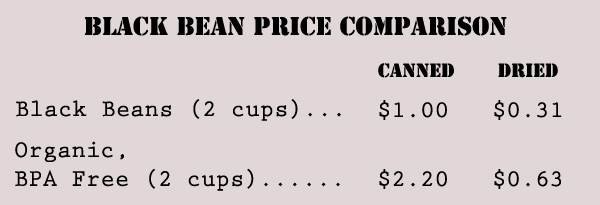
Cooking with dried beans has other advantages, too… Not only can you save money, but you can control all of the ingredients that go into the beans. Watching how much sodium you eat? You can cut back on how much you add when you cook the beans. Want to add some extra flavor to the beans? No problem! You can cook the beans in broth instead of water and add in whatever flavors you like!
Have I convinced you to start cooking your own dried beans? Yup, I thought so!
How to Cook Dried Beans
So, to help get you on your way to healthy, budget-friendly meals, I thought I’d share a quick tutorial on how to prepare dried beans. Cooking beans seems to be one of those things (like baking with yeast, and preparing rice) that many people are afraid of in the kitchen. I’ve been there. But, now that I’ve figured out the method for cooking beans, I’ve found that it’s really quite easy!
Step 1 – Rinsing
This one is easy, but it’s worth mentioning. Before you get started with cooking your beans, you should give them a quick rinse in a colander. Also, be sure to pick through them to check for any small rocks or sticks. Even with the best equipment, it’s possible to have little bits of foreign objects in your dried beans. No big deal… Just pick them out and move along!
Step 2 – Soaking
Don’t skip this step! You need to soak dried beans before you cook them. Otherwise, your beans may not cook evenly, and you may be left with less-than-tender beans when you’re done cooking. No one wants that.
When it comes to soaking, you have two options –
- Overnight Soak – If you remember (which I rarely do), you can just soak your beans overnight. Place the beans and water in a large pot, cover them, and let them sit overnight. Simple.
- Quick Soak – More than likely, you’ll want to do a quick soak because you forgot to soak the beans overnight. No problem! Combine the beans and water in a large heavy pot. Bring it to a boil for 2 minutes, then remove from the heat, cover, and let sit for an hour.
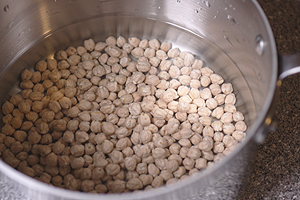
You’re probably wondering how much water you need to soak your beans, right? Glad you asked! You’ll want to use 8 cups of water for each pound of dried beans. Easy, right?
Step 3 – Drain
Once you’ve soaked your beans, you should drain them before cooking them again. Just dump them into a colander. Then, give your pot a quick rinse and return it to the stove to cook the beans.
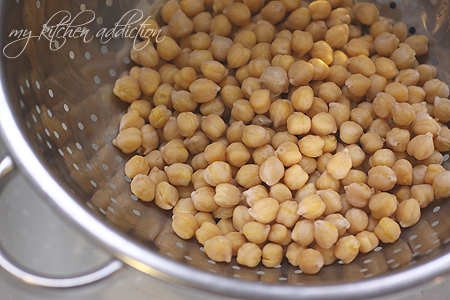
Step 4 – Cooking
Once you’ve rinsed, soaked, and drained your beans, you’re ready to cook! All you need to do is bring the beans and water to a boil, reduce to a simmer, and cook until the beans are tender.
But, let’s not just stop there. Remember how I promised you that you could add your own flavoring to the beans? This is where you do it.
- Stock or Broth – Cooking your beans in stock or broth is probably the easiest way to add flavor. Instead of adding water to the beans when you cook them, simply swap it out for an equal amount of stock or broth. Makes sense, doesn’t it?
- Bacon and Sausage – Bacon and sausage both add some great flavor to beans (and a little bit goes a long way!). Simply add them to the pan before adding the beans and liquid. Cook over medium-low heat to render the fat and flavors from the meat. You can remove the meat from the pot before continuing to cook and reserve it for later… All of the great flavor will stay in the pot!
- Vegetables – You can add a lot of flavor to your beans by adding some onions, garlic, celery, or carrots. Much like adding meat, simply saute the veggies in the pot prior to adding the beans to soften them up a bit and develop the flavor. Then, just add the beans and liquid and cook away!
- Herbs and Seasonings – Fresh hearty herbs like thyme and rosemary can be added directly to the pot when you add the beans and liquid. Dried herbs work well, too, and are better for slow cooking if you want to use more delicate herbs like basil or parsley. You can also add other seasonings and spices.
Again, the key is having the right amount of liquid. If you don’t have enough liquid, your beans won’t cook the whole way through and may also dry out or scorch in the pot. No one wants that!
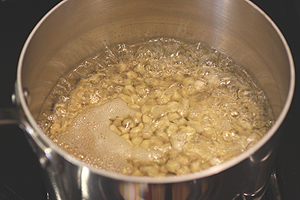
Much like soaking, there’s a simple ratio for cooking the beans, too. But, it’s a bit more flexible. You want to use about 6-8 cups of liquid (water, broth, stock, etc.) for every pound of dried beans. How much liquid you use may depend on how you plan to serve them. If I know I am going to drain them before serving, I usually just opt for 8 cups of water so I don’t have to worry about it. But, if you’re going to serve the beans without draining them, you may want to start at 6 cups of liquid and keep an eye on them as they cook.
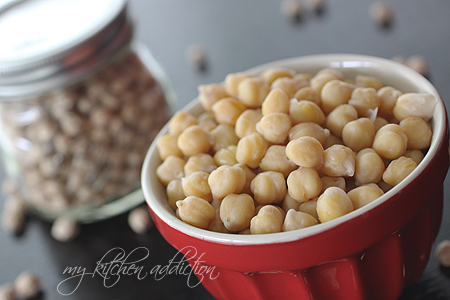
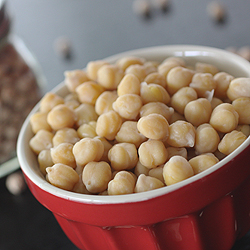


I love it! Thanks for sharing this with us Jen! I think you’ve convinced me!
Thanks for the reminder, Jen. I always forget about the quick soak method!! And right now a big vat of bean soup would really make me feel better.
Thanks for this very thorough tip. I like to cook beans, but don’t get to them as often as I would like because of the planning involved. This usually ends with a can of beans that I know costs more. I’m looking into buying dried beans in bulk (have any suggestions of where?), cooking and freezing them. Have you ever frozen them and do you have any suggestions on this? Also, have you ever cooked them in a crockpot? I’ve done pinto beans this way and frozen them and they seem fine.
Thanks!
Michelle
Hi, Michelle – Thanks for stopping by! I have not frozen beans before, but I’ve read that it can be done. My understanding is that it’s best to leave the beans in the cooking liquid when freezing them (instead of draining/rinsing first) since the liquid helps to keep them from drying out in the freezer. Also, I have made beans in the crockpot. I usually still soak them first and then do the cooking part in the crock pot. I still get good results, but I find that it takes a bit longer. I usually only do that if I’m adding beans to a dish I would normally cook in the crockpot (i.e. a soup or chili).
Thanks for sharing this wonderful tip. Your full of so much culinary wisdom.
I use my pressure cooker for beans and love it! Just 10 minutes and they are done.
I learned to cook beans from my mom, she never would have bought canned! Thanks for reminding us that with a little planning and investment of time we can eat well without over spending. Sometimes I prepare beans in the crock-pot if I am unable to watch over the stove for the entire cooking time.
Nice tutorial Jen…only way to prepare beans if you ask me. No canned beans or soup here!
How long do you usually have to cook the beans before they are tender? I always underestimate the time and then end up with some chewy beans.
Hi, Monica – It will depend on the type of beans and the recipe, but I usually plan on simmering the beans for 1 1/2 – 2 hours for them to be tender.
Yup, you’ve convinced me!
Really good comentary – interesting and very practical. Beans really are underrated!